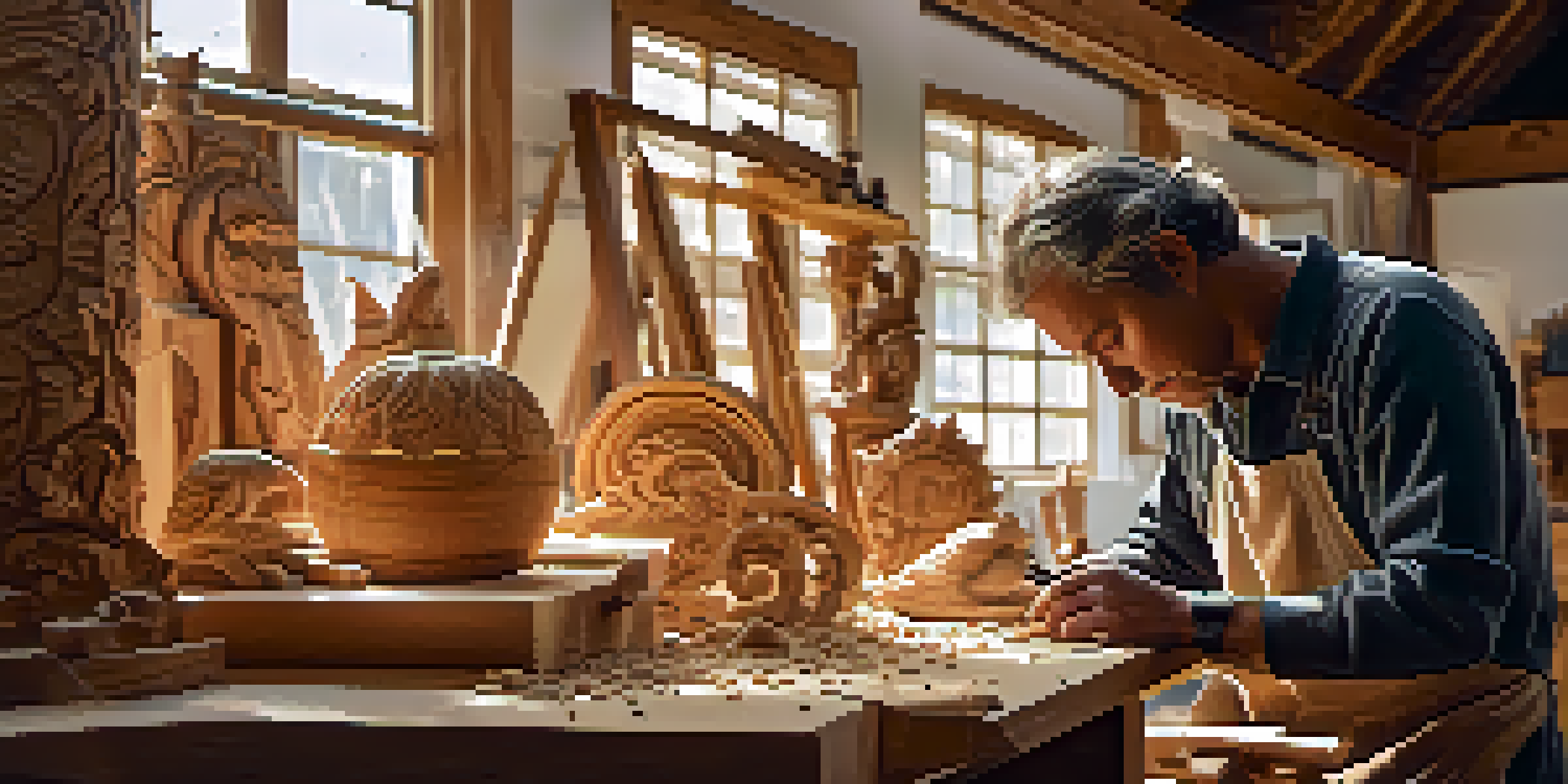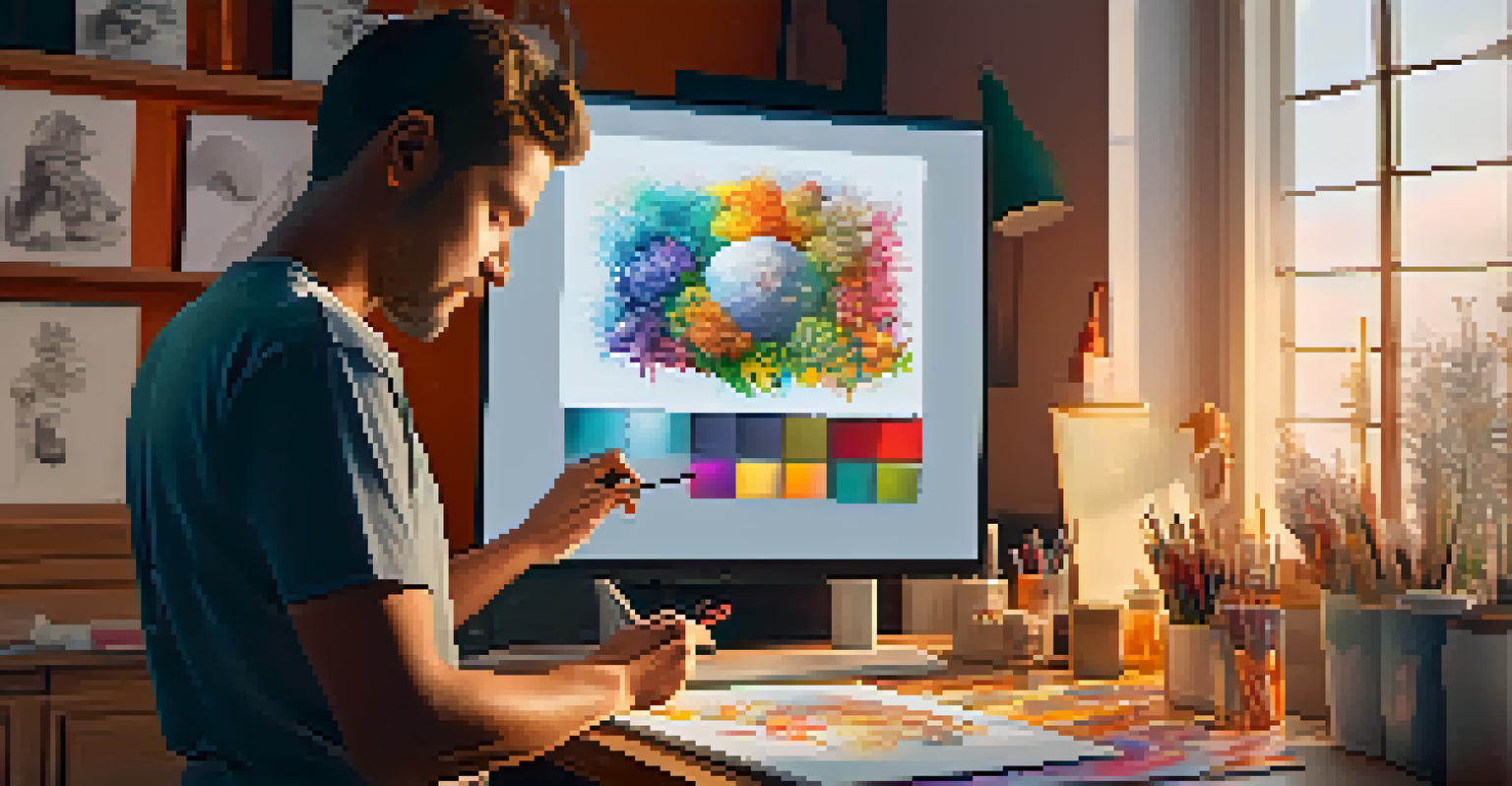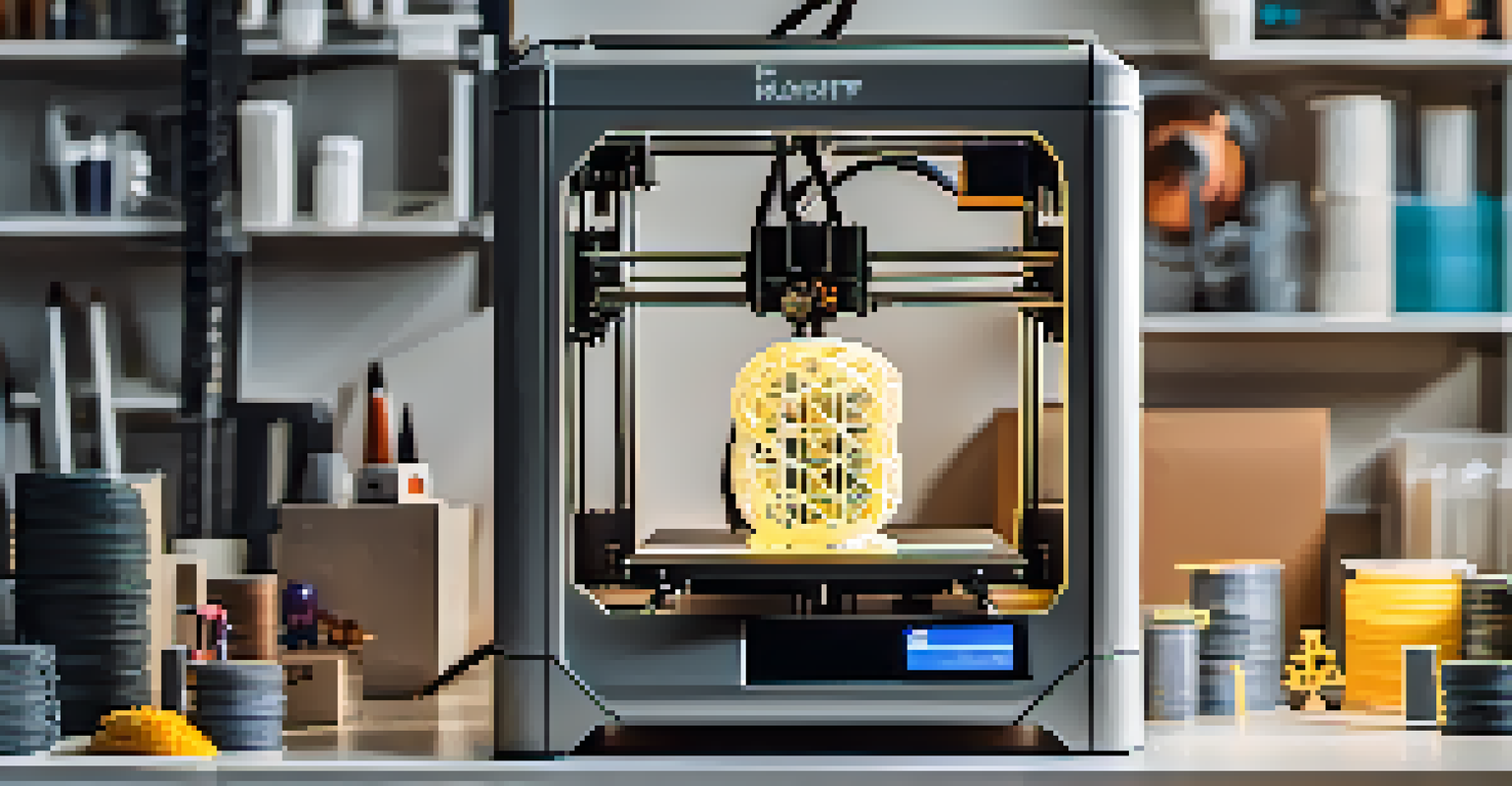The Evolution of Carving: From Traditional to Digital Methods

Understanding Traditional Carving Techniques
Traditional carving encompasses a myriad of techniques that have been passed down through generations. From wood to stone, artisans have honed their skills, often using simple tools to create intricate designs. Each material offers unique challenges and opportunities, fostering a deep connection between the artist and their medium. For example, a woodcarver may begin with a basic chisel, gradually crafting detailed figures that tell a story.
Art is not what you see, but what you make others see.
The process often involves a significant amount of time and patience, as artists must carefully remove layers to reveal their vision. Traditional carving not only showcases talent but also reflects the cultural heritage and values of the community. This connection to history is what makes traditional carving so special, as each piece is imbued with stories and traditions.
Furthermore, the tactile experience of working with natural materials adds to the allure of traditional techniques. The satisfaction of seeing a rough block of wood transform into a beautiful sculpture is an experience many artists cherish. This hands-on approach fosters a sense of accomplishment and pride that is often unmatched in the digital realm.
The Rise of Technology in Carving
As technology advanced, so did the methods of carving. The introduction of power tools revolutionized the carving landscape, making it easier for artists to execute complex designs. Electric routers, saws, and sanders allowed for more precision and speed, enabling artists to explore new creative avenues. This shift not only increased productivity but also broadened the range of possibilities in sculpture and design.

However, the rise of technology also sparked a debate within the art community. Some purists argue that the essence of carving is lost when using machines, as the intimate connection to the material can diminish. Nevertheless, many artists have embraced these tools, blending traditional techniques with modern technology to create hybrid works that resonate with contemporary audiences.
Traditional Carving's Cultural Roots
Traditional carving techniques embody cultural heritage, showcasing the artist's connection to their medium and community.
This fusion of old and new has opened doors for innovative expressions, allowing artists to experiment with different materials and styles. For instance, a sculptor might combine hand-carving with laser cutting to achieve intricate patterns that would be nearly impossible to create by hand alone. This evolution demonstrates that technology, rather than replacing traditional methods, can enhance and expand the artist's toolkit.
Introduction to Digital Carving Techniques
Digital carving has emerged as a groundbreaking method for artists and designers alike. Utilizing software and digital tools, artists can create intricate designs that can be manipulated and refined with ease. Programs like CAD (Computer-Aided Design) allow for precision and flexibility that traditional methods may struggle to achieve. This shift toward digital artistry opens up a world of possibilities for both established and emerging creators.
The best artist has no conception that a marble block does not contain within it a statue, but is a canvas waiting to be revealed.
Furthermore, digital carving allows for rapid prototyping, enabling artists to visualize their ideas before committing to physical materials. This not only saves time but also reduces waste, making the creative process more sustainable. Many artists find that they can experiment with color, texture, and form in ways that were previously unimaginable.
However, the transition to digital methods isn't without its challenges. Some artists may find the learning curve steep, as mastering software and digital tools requires a different skill set than traditional carving. Yet, those who embrace this change often find that it enhances their artistic vision, allowing them to push boundaries and explore new creative territories.
Comparing Traditional and Digital Carving
When comparing traditional and digital carving, it’s crucial to recognize the strengths and weaknesses of each method. Traditional carving is often celebrated for its unique character and craftsmanship, with each piece reflecting the artist's personal touch. The imperfections found in hand-carved works can add charm and authenticity, making every piece one-of-a-kind.
On the other hand, digital carving offers unparalleled precision and repeatability. Artists can create exact replicas of their designs, which is particularly useful in industries like manufacturing and architecture. This aspect of digital carving allows for mass production while maintaining a high level of detail, something that traditional methods may struggle to achieve.
Technology Transforms Carving Art
The rise of technology, including digital carving and 3D printing, expands artistic possibilities while sparking debates on authenticity.
Despite these differences, both methods have their place in the art world. Many artists find value in incorporating elements of both traditional and digital carving into their work. This hybrid approach not only enriches the creative process but also allows for a broader range of artistic expression that can appeal to diverse audiences.
The Impact of 3D Printing on Carving
3D printing has taken the art of carving to a whole new level, enabling artists to create intricate designs with remarkable ease. This technology allows for the production of complex shapes that would be labor-intensive to carve by hand. Artists can experiment with different materials, from plastics to metals, expanding their creative repertoire.
Moreover, 3D printing fosters collaboration between artists and engineers, leading to innovative designs that blend art and technology. For instance, a sculptor can design an intricate piece digitally and then use 3D printing to produce a prototype. This collaboration not only enhances the creative process but also encourages interdisciplinary approaches to art.
However, the rise of 3D printing also raises questions about originality and authenticity in the art world. As the line between handmade and machine-made blurs, artists must navigate the evolving landscape while staying true to their vision. Despite these challenges, many see 3D printing as a valuable tool that complements traditional carving rather than replacing it.
Embracing Sustainability in Carving Practices
Sustainability has become a significant consideration in both traditional and digital carving practices. As artists become more aware of environmental concerns, many are seeking ways to minimize their ecological footprint. For traditional carvers, this may mean sourcing materials from sustainable suppliers or using reclaimed wood to create their pieces.
Digital artists, on the other hand, can adopt practices that reduce waste, such as utilizing software that allows for efficient design before any material is cut. Additionally, 3D printing can often create less waste than traditional methods, making it an appealing option for eco-conscious creators. This shift towards sustainability not only benefits the environment but also resonates with a growing audience that values ethical artistry.
Sustainability in Carving Practices
Both traditional and digital carvers are increasingly prioritizing sustainability, seeking methods that minimize ecological impact.
By prioritizing sustainable practices, artists can contribute to a broader movement that encourages responsible consumption and production. This commitment to sustainability reflects a desire for a balanced relationship with nature, ensuring that future generations can enjoy and engage with the art of carving.
The Future of Carving: Trends and Innovations
Looking ahead, the future of carving is likely to be shaped by ongoing innovations in technology and materials. As tools become more advanced, artists will have greater freedom to explore new techniques and styles. We can expect to see more collaborations between artists and technologists, resulting in groundbreaking works that challenge traditional notions of carving.
Furthermore, the integration of augmented and virtual reality into the carving process could revolutionize how artists visualize and create their work. Imagine being able to step into a virtual space where you can manipulate designs in real-time before bringing them to life. This kind of immersive experience could redefine the creative process and open up a whole new realm of possibilities.

As artists continue to adapt to these changes, the blend of traditional and digital methods will likely become more seamless. This evolution will not only enrich the art of carving but also inspire a new generation of creators who are eager to push boundaries and explore the intersection of art and technology.